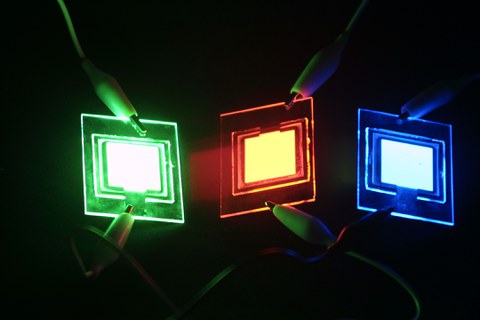Photonics - the physics of light
Light has always played a prominent role in human history - from mastering fire to the currently ubiquitous displays on mobile devices.
Historically, the propagation of light rays was studied in the field of optics. Modern atomic and quantum physics of the 20th century provided fundamental insights into the nature of light. This is what photonics or optoelectronics are based on, i.e. the theory of the conversion of electrical energy into light and vice versa. Many things that make our lives easier today became possible with it: light-emitting diodes, LCD and LED displays, lasers, solar cells, digital cameras and many more.
All photonic technologies are based on semiconductors, i.e. materials whose electrical conductivity can be controlled using various methods. The extraction of these substances is often associated with high costs and massive environmental damage due to their rarity, or they are themselves toxic. An important challenge in photonics is therefore to find sustainable, environmentally friendly and inexpensive semiconductor materials.
The Dresden Concept - Institute for Applied Physics and Photonics primarily researches organic optoelectronic materials and components. In particular, organic solar cells and photo detectors, organic LED, organic circuits und organic lasers re developed and improved here.
The connecting bracket "organic" relates to the use of semiconductor materials from organic chemistry or the chemistry of hydrocarbons. There are millions of chemical compounds that can be produced from carbon, hydrogen and oxygen in a resource-saving manner and that have a wide variety of electrical and optical properties.
Through thermal evaporation in a vacuum, these materials are evaporated onto a substrate in thin layers in the nanometer range. Suitable combinations of organic materials result in stacks of layers that generate light from electricity (organic LED) or, conversely, produce electricity from light (organic solar cells and photodetectors). The finished components are extremely thin (<1μm), mechanically flexible and even transparent!


